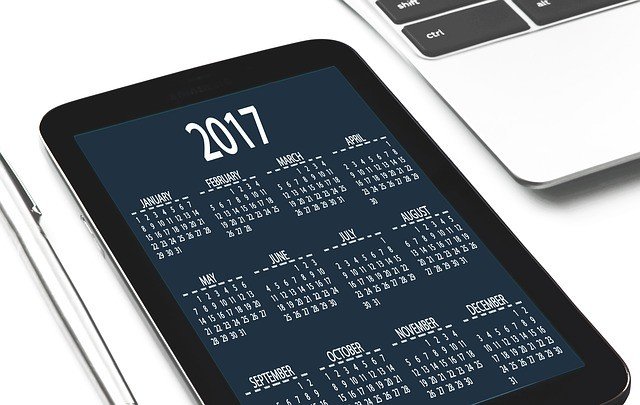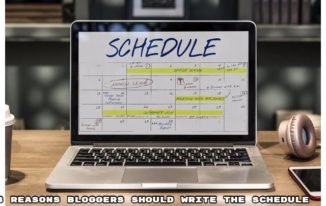An editorial calendar helps keep track of your blogging schedule along with the number of posts you make on your blog and holidays that probably might affect the topics of your blog. Creating an editorial calendar not only helps cut down the hassle of coming up with a new idea for a blog post but it also allows you to think about your blogging strategy from a different angle.

Be it publishing a greater amount of content or less or even the same, an editorial calendar resolves all the challenges and hurdles of planning, publishing and sharing your content, thus saving a ton of time for you.
So What Actually Is An Editorial Calendar?
An editorial calendar for a blog is more than just a simple calendar. A blog editorial calendar enables bloggers to develop a strong blogging strategy. Once you create an editorial calendar, your blog starts working for you in the way you want it to work. Your blog then becomes a strong tool for your business, thus attracting potential customers, building strong relationships with them and helping you acquire more sales.
A well-structured editorial calendar assists you in planning out the content of your blog. It eventually approaches your content from two different angles: first, it encourages you to start viewing your content as it “will” be, and second, it compels you to view your content as it “should” be. Hence, an editorial calendar allows bloggers to split their content creation process into different convenient steps and apply those steps afterward.
Creating an editorial calendar is not the only challenge; creating it and then sticking with it for long is the real thing. In this article, you will get to learn some tips on creating an editorial calendar for your blog and what kind of tools you can use to create it:
How To Create A Blog Editorial Calendar:
1.) Figure Out Your Blogging Routine
The first and foremost thing to do when creating your blog editorial calendar is to determine your schedule for blogging. Find out how frequently you will be posting on your blog – daily, weekly or monthly basis – and try to be as practical here as you can.No matter how often you post, make sure you do it consistently.
2.) Define Your Goal
The second thing to do when making an editorial calendar is to think about what your main objective or goal will be for your blog. Defining your goal for your blog helps you move an inch further towards your larger goal. You must identify the main aim of your blog. For example, your aim can be positioning yourself as a professional within your field or providing precious insights for connecting with a specific type of audience.
3.) Identify Your Audience
Next thing is to identify for whom you are blogging exactly. It is advisable that you should blog for your customers – not only existing ones but potential ones as well. In other words, you need to identify and define your target audience or niche for which you will write your blog posts or to whom you will address your posts.
4.) Create Your Blog Categories
Determining various categories for your blog is the next thing. Think about what kind of blog content will help you achieve your goal and objectives for your blog. It’s always better to come up with categories depending on for which you are blogging. For example, if you have a blog related to women’s health issues, your blog categories can be about various exercises, skin and hair issues, beauty tips, and diet.
5.) Brainstorm Ideas For Blog Posts
Come up with at least a list of 10 to 20 ideas for a blog post for each of your blog categories. Make sure that your ideas are related to your business and what your customers are interested in. Grab a paper and a pencil set a timer, and start jotting down whatever pops up in your mind. Considering the above women health related blog example, you can come up with the following blog posts ideas for the beauty tips category:
- Top beauty hacks
- Latest hairstyles
- Makeup trends
- Various hair accessories
.. and more.
Some Essential Tools For Editorial Calendars:
There are some great tools for creating a blog editorial calendar. You can choose whichever suits your needs:
- Google Sheets–one of the most customizable, easy to use spreadsheets of all times, Google Sheets is a free tool for setting up your editorial calendar and can be accessed on all devices through cloud storage.
- CoSchedule–a shared tool that allows you to effortlessly plan and publish your blog content through its amazing drag and drop features. It’s basically a WordPress editorial calendar that helps you schedule your blog posts.
- Trello–a project management tool by which you can drag and drop ideas and thoughts for your blog editorial calendar into various lists and cards and be able to organize your content in a quick manner.




Honoring your routine is definitely key Vishwajeet. Gotta listen to your body. Find your rhythm. Honor your energy. Excellent advice here.
Hello Ryan,
Glad you liked the post. Thanks for stopping by 🙂
Vishwajeet
Awesome post, Vish! You pretty much covered the basics of developing an editorial calendar for one’s blog. But if there’s something I could add, it’s for bloggers to also research for target keywords.
Sometimes, it’s not enough to consistently create content that people will read. It’s equally important to come up with blog posts that people will easily find on Google and Bing. The keywords you will find and use for your editorial calendar will determine the volume of quality of traffic your blog will attract.
Hope this helps your readers!
Hello Christopher,
Thanks for your valuable inputs. I really appreciate that. Thanks for stopping by 😃